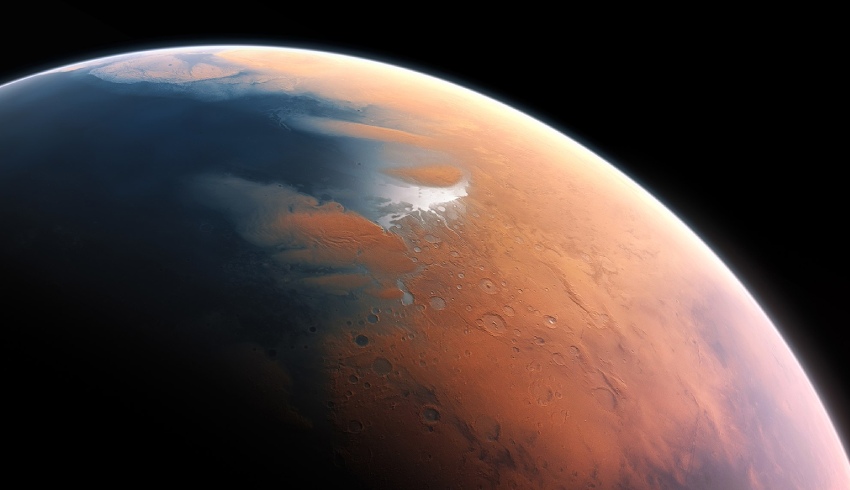The mineral zircon, which is often found in small quantities of rocks, and in Martian meteorite NWA 7034 – dubbed “Black Beauty” – may prove habitability existed on Mars but was possibly wiped away by a catastrophic impact.
“This grain is truly a one-off gift from the Red Planet,” said lead author Morgan Cox, a PHD candidate from Curtin’s Space Science and Technology Centre (SSTC) in the School of Earth and Planetary Sciences.
“High-pressure shock deformation has not previously been found in any minerals from Black Beauty. This discovery of shock damage in a 4.45-billion-year-old Martian zircon provides new evidence of dynamic processes that affected the surface of early Mars,” Cox said.
The 320-gram meteorite was first found in Northern Africa and reported in 2013 and has been under investigation for almost a decade.
Cox said it is a collection of broken rock fragments and minerals – mostly basalt – which solidified and became rock over time. The zircon found inside preserved the possible evidence of a large asteroid impact.
Cox said the shock damage involves a process of “twinning”, which is when a pre-existing mineral or crystal undergoes transformation due to a change in pressure and temperature.
Similar discoveries have been found from large impact sites on Earth and the moon, but never on Mars.
“Prior studies of zircon in Martian meteorites proposed that conditions suitable for life may have existed by 4.2 billion years ago based on the absence of definitive shock damage” said co-author Dr Aaron Cavosie, also from the SSTC.
The physical evidence shows a large impact on early Mars, which may have wiped out any potential habitability.
“Mars remained subject to impact bombardment after this time, on the scale known to cause mass extinctions on Earth,” Cavosie added.
“The zircon we describe provides evidence of such impacts and highlights the possibility that the habitability window may have occurred later than previously thought, perhaps coinciding with evidence for liquid water on Mars by 3.9 to 3.7 billion years ago.”
The discovery was made in collaboration with The University of Western Australia and the University of Glasgow.
Curtin University is yet to respond to a request for comment.
The institution has had a slew of recent discoveries, after only last week seeing a student find a bright radio source in the Milky Way that beams radiation multiple times an hour.
The wider team who discovered the phenomena describes it as one of the brightest radio sources in the sky and think it’s only around 4,000 light years away from Earth. Their early hypothesis is that it could be a neutron star or a white dwarf – collapsed cores of stars – with an ultra-powerful magnetic field.

Isabella Richards
Bella Richards is a journalist who has written for several local newspapers, her university newspaper and a tech magazine, and completed her Bachelor of Communications (Journalism) at the University of Technology Sydney in 2020. She joined Momentum Media in 2021, and has since written breaking news stories across Space Connect, Australian Aviation and World of Aviation.
You can email Bella on: [email protected]

